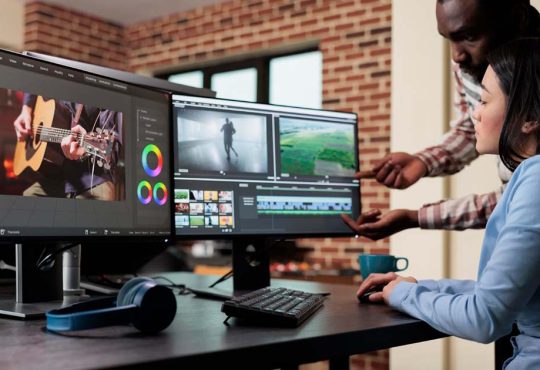
6 Essential Camera Movements to Elevate Your Video Production
When it comes to video production, mastering camera movements is important. Each movement has the potential to tell a story, convey emotion, or simply make a scene more captivating. Whether you’re a budding filmmaker, a content creator, or just looking to up your video game, understanding these six essential camera movements can significantly elevate your work.
1. The Pan Shot
Panning involves moving the camera horizontally from a fixed position, left to right, or vice versa. It’s a simple yet powerful way to introduce a setting, follow action, or reveal elements within a scene. To execute a smooth pan, use a tripod with a fluid head. Panning can also create a sense of anticipation or reveal something previously off-screen, adding depth to your narrative.
2. The Tilt Shot
Tilting refers to the vertical movement of the camera up or down from a stationary position. Like panning, it requires a tripod for stability and fluidity. Tilt shots can reveal the height of a subject, such as a towering skyscraper, or a character’s reaction from their feet up. It’s an excellent tool for creating a visual hierarchy in your scene or emphasizing the scale and grandeur of a location.
3. The Dolly Shot
Dolly shots move the camera towards or away from a subject, creating a sense of depth and immersion. Unlike a zoom, dollying physically moves the camera, which preserves the spatial relationships between objects. This technique can intensify emotional moments, simulate a character’s perspective, or smoothly transition between scenes. Dolly shots require a track or a stabilizer to achieve a smooth motion.
4. The Crane/Jib Shot
Crane or jib shots involve moving the camera vertically, often with the help of a crane or jib arm. This movement can create sweeping, cinematic shots that add a dramatic flair to your production. It’s particularly effective in capturing large scenes or following action from a higher perspective. A crane shot can start at ground level and rise to reveal the full scope of a scene, offering a god-like viewpoint that covers the entirety of your setting.
5. The Tracking Shot
Tracking shots follow alongside the action, moving the camera parallel to the subject. This can be achieved by placing the camera on a dolly, using a handheld stabilizer, or even a drone. Tracking shots are perfect for maintaining the pace with a moving subject, to create a dynamic and engaging scene that pulls viewers along for the ride.
6. The Handheld Shot
Handheld shots give your footage a raw, organic feel by allowing for natural camera movement. This technique is ideal for creating an intimate or urgent atmosphere, mimicking how we see the world with our own eyes. Handheld shots can convey chaos, instability, or a personal touch, depending on its use. Though it’s the most accessible movement, mastering the art of stabilizing and controlling the camera by hand is crucial to avoid unwanted shakiness.
Elevate Your Video Production Today
By integrating these six essential camera movements into your video production, you can significantly enhance your storytelling capabilities and engage your audience on a deeper level. Each movement offers a unique way of expressing your creative vision and bringing your scenes to life. Remember, the key to impactful video production lies in!


